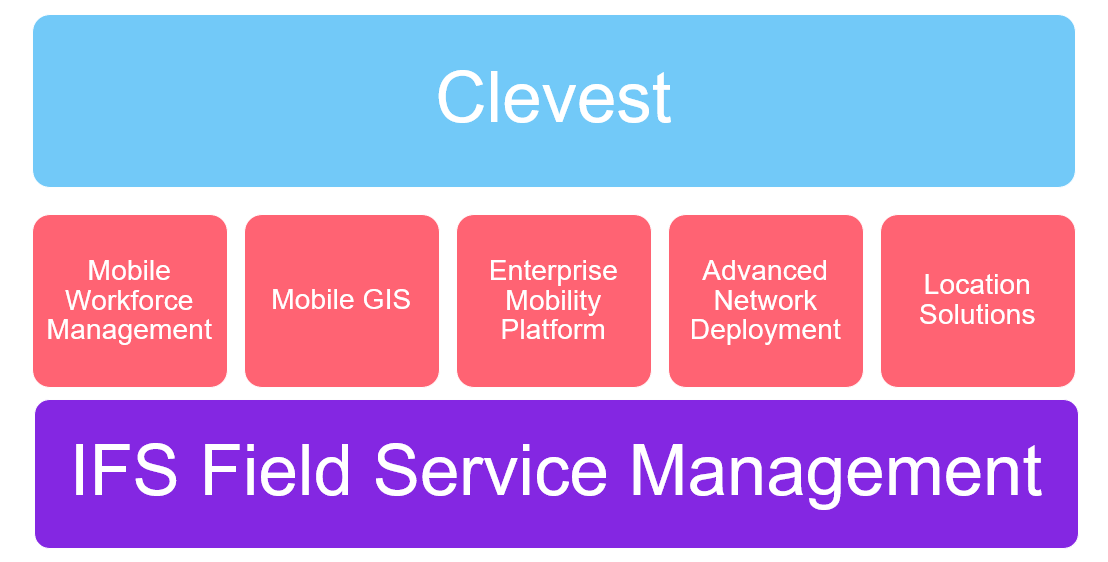Once again IFS has full coverage in all functional capabilities in the 2021 Gartner Market Guide for Mobile Workforce Management Software for Utilities.
Gartner has published the 2021 Gartner Market Guide for Mobile Workforce Management Software for Utilities. We always look forward to Gartner coverage with great anticipation, and this report was no exception. Especially as this would be the first analyst coverage of IFS since the acquisition of Clevest.
As expected, this year’s market guide provided a comprehensive overview of the Mobile Workforce Management (MWM) space. With the acquisition closing just a few short months ago, IFS and Clevest are assessed separately. However, the advantages of the acquisition are clearly defined within the Functional Capabilities breakdown:
Looking Ahead
Along with detailed insights into each of the vendors that received coverage, the analyst also examined potential future trends within the industry. Of particular interest was increased activity noted in the utility market by Field Service Management (FSM) vendors. This included vendor acquisitions.
While this increase in activity can certainly cause market complexity, especially when carried out in a piecemeal fashion, using an all-inclusive approach—an actual convergence of MWM and FSM—is a natural next step for the industry
This concept dovetails nicely with our strategy to consolidate the capabilities of Clevest MWM with the market-leading capacities of IFS in driving the service experience. Although currently two distinct markets and product offerings, the convergence of MWM with FSM will provide utilities with an end-to-end service and operations management model delivered on a single technology platform.
Field Service Management (FSM) and Mobile Workforce Management (MWM)
Based on Gartner’s definition, FSM focuses explicitly on service-related deliverables, including managing, maintaining, and monitoring assets under a predefined service or maintenance contract. This technology helps utilities manage demand, plan work, inform and enable technicians, debrief work orders, and perform analysis and integration.
As noted in the guide, utilities rely on MWM technology to optimize and manage field workforce activities. These solutions handle utility-specific work requirements across the entire life cycle of asset-intensive work processes, including the enablement of work requests within utility enterprise systems.
FSM is particularly good at tracking service level agreements and related customer interactions, automating the entire process, and providing exceptional service. Although the customer experience has always been a consideration for utility organizations, the underlying MWM technology focuses predominantly on operational aspects such as asset management, outage support, meter installs, and other maintenance work.
With the convergence of these technologies, FSM and MWM capabilities will work in concert, providing richer, data-driven insights to the utility for an efficient service and operations model.
A Single Solution
The IFS strategy to consolidate these capabilities will mark the rise of utilities to deliver a much more customer-centric experience. The model will allow each utility to build a composable solution, selecting industry-specific applications and functionality hosted on the industry-agnostic, award-winning IFS service platform.

Data from operational and service activities will be shared bi-directionally, integrating MWM with adjacent systems such as customer information systems (CIS) and enterprise asset management (EAM) systems. Additional insights are garnered from applications such as geospatial information systems (GIS) and advanced distribution management systems (ADMS). The utility benefits from a deeper, richer data model, providing a comprehensive view of the entire business.
FSM data
FSM data enhances asset management capabilities. For example, a technician attends to a customer multiple times to repair the same asset. Repair history data is shared with the EAM system, which alerts users that the asset is failing and may require replacement.
MWM data
GIS system data is overlaid on top of service data to indicate predictive hotspots. For example, meters within an area are dying, while meters in other areas are operating normally. With GIS data overlaid, the utility determines that the location is a marshland with high heat and humidity, providing important geospatial context to the overall analysis.
Utilities will reduce the total cost of ownership by having a single, composable FSM/MWM solution as opposed to the costs from having separate solutions.
Next Steps
We are excited to be leading the effort in the convergence of MWM and FSM technologies for utility organizations worldwide. This combined service and operations model is important because it recognizes and supports existing inter-relatability between service and field workforce management.
By integrating MWM and FSM, these distinct aspects can work together in parallel. Learn more about how IFS and Clevest are better together.
Do you have questions or comments?
We’d love to hear them so please leave us a message below.
Follow us on social media for the latest IFS news!
LinkedIn | Twitter | Facebook | Instagram
Gartner, Market Guide for Mobile Workforce Management Software for Utilities, Nicole Foust, 5 May 2021
Gartner does not endorse any vendor, product or service depicted in its research publications, and does not advise technology users to select only those vendors with the highest ratings or other designation. Gartner research publications consist of the opinions of Gartner’s research organization and should not be construed as statements of fact. Gartner disclaims all warranties, expressed or implied, with respect to this research, including any warranties of merchantability or fitness for a particular purpose.

